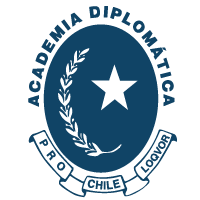Armed Attack and Article 51 of the UN Charter : evolutions in customary law and practice
Tipo de material: TextoIdioma: Inglés Detalles de publicación: Cambridge; New York; Melbourne; Singapore; Mexico Cambridge University Press 2010Descripción: 585 pISBN:
TextoIdioma: Inglés Detalles de publicación: Cambridge; New York; Melbourne; Singapore; Mexico Cambridge University Press 2010Descripción: 585 pISBN: - 9781107685338
| Tipo de ítem | Biblioteca actual | Signatura topográfica | Estado | Fecha de vencimiento | Código de barras | |
|---|---|---|---|---|---|---|
 Monografías
Monografías
|
Biblioteca Central | 341.3 R985 2010 (Navegar estantería(Abre debajo)) | Disponible | 14920 |
Introduction; --1. The methodological debate and the quest for custom. --2. Conditions of self-defence. --3. The Armed Attack Requirement Ratione Materiae. --4. The Armed Attack Requirement Ratione Temporis. --5. The Armed Attack Requirement Ratione Personae. --6. What future for the armed attack criterion?
This book examines to what extent the right of self-defence, as laid down in Article 51 of the Charter of the United Nations, permits States to launch military operations against other States. In particular, it focuses on the occurrence of an 'armed attack' - the crucial trigger for the activation of this right. In light of the developments since 9/11, the author analyses relevant physical and verbal customary practice, ranging from the 1974 Definition of Aggression to recent incidents such as the 2001 US intervention in Afghanistan and the 2006 Israeli intervention in Lebanon. The notion of 'armed attack' is examined from a threefold perspective. What acts can be regarded as an 'armed attack'? When can an 'armed attack' be considered to take place? And from whom must an 'armed attack' emanate? By way of conclusion, the different findings are brought together in a draft 'Definition of Armed Attack'.


